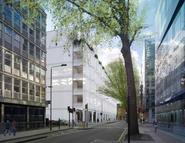Geoff Goodhill
Tuesday 23rd April 2019
Time: 4.00pm
Ground Floor Seminar Room
25 Howland Street, London, W1T 4JG
Separating spontaneous and evoked activity with a latent factor model of calcium imaging data.
The pattern of neural activity evoked by a stimulus can be substantially affected by ongoing spontaneous activity. For calcium imaging data there is currently a lack of statistically principled methods for estimating the relative contributions of evoked and spontaneous activity at each moment, making it difficult to, for instance, accurately estimate neural tuning curves. I will present a probabilistic latent variable model that decouples the components of calcium imaging data that are due to evoked activity from those driven by low dimensional spontaneous activity. We use variational inference to compute an approximate posterior distribution over latent sources of shared variability, identifying low dimensional structure underlying spontaneous activity and allowing for the estimation of stimulus tuning properties that take this variability into account. Applying this model to our 2-photon GCaMP6s recordings from the larval zebrafish optic tectum reveals the extent to which neurons are driven by visual stimuli, latent sources of spontaneous activity, and their interaction. This model is broadly applicable to calcium imaging data, brings new insight into population-level neural activity, and can refine our understanding of the role of spontaneous activity in neural computation.
 Close
Close



_RGB.jpg)